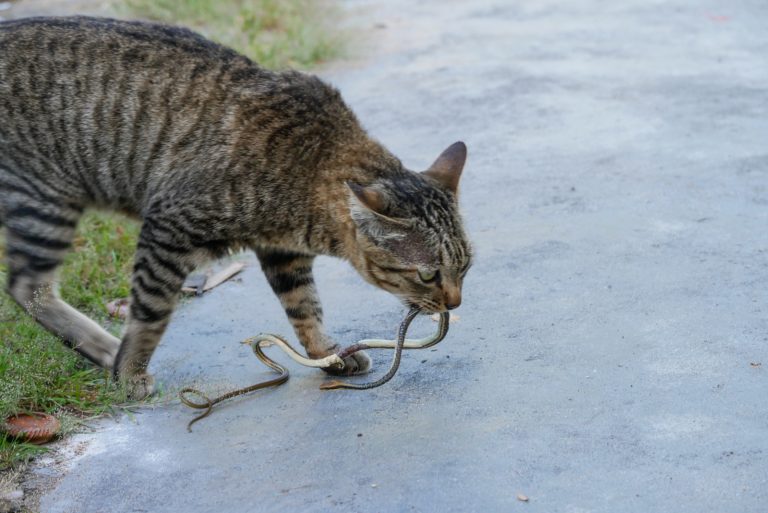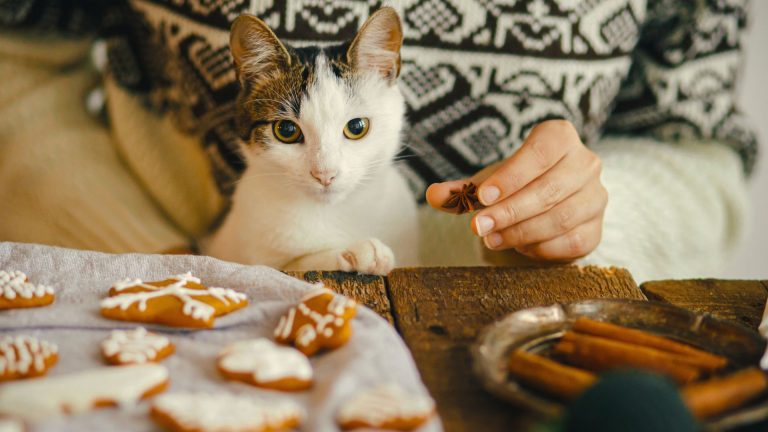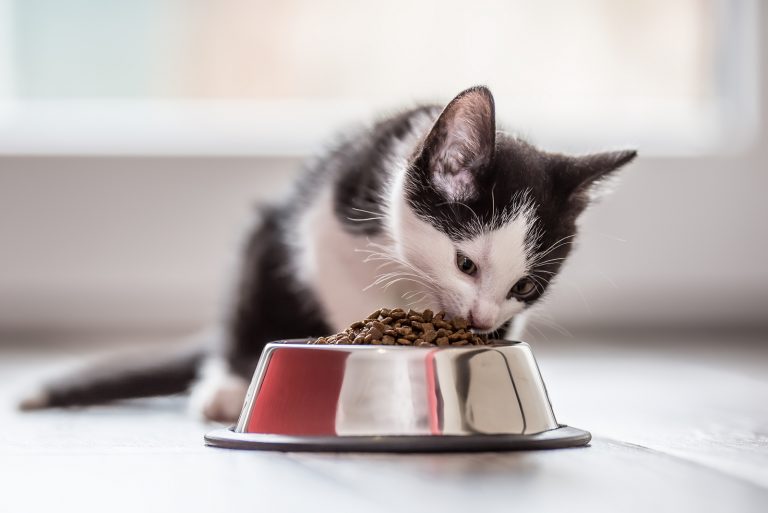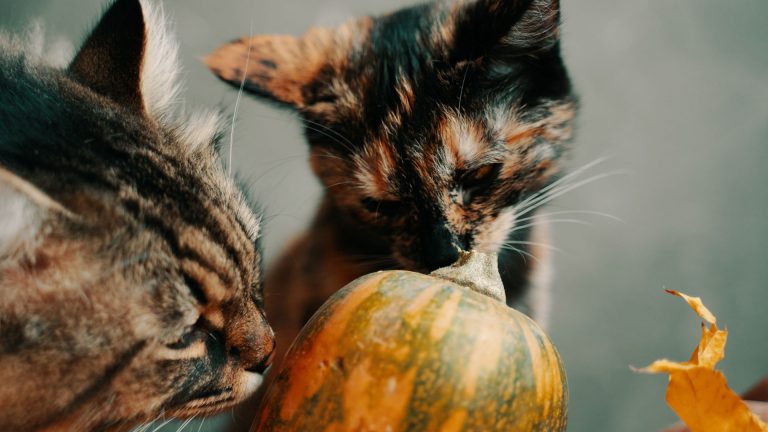4-Month-Old Kittens Size And Growth Changes – Kitten To Adult
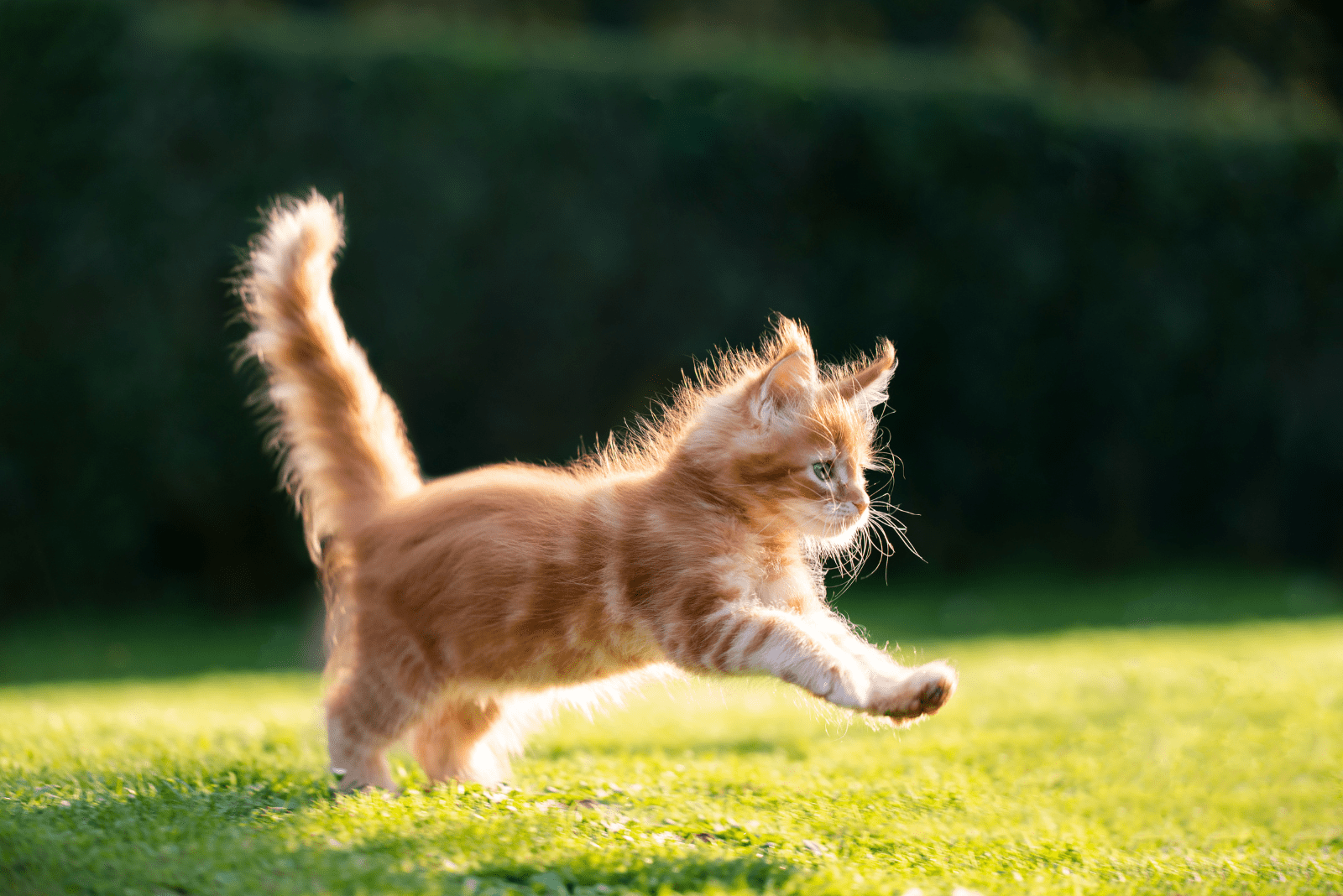
People ask many different questions when it comes to owning a cat. We all wonder about different things, especially when we’re about to adopt a new pet. It’s normal to want to know what to expect!
I’ve noticed a really strong trend where people are especially interested in what the 4-month-old kittens’ size should be. When you think about it, this makes sense…
Most kittens are put up for adoption when they’re about 14 weeks old, and that is when we start caring for them, so it’s no wonder that new owners will wonder if their kitten is growing properly.
4-month-old kittens should weigh about four or five pounds, but remember that some cat breeds are typically bigger or smaller, so this is not an exact rule.
Let’s see how much your kitten should weigh at each stage of its life and what you can expect during the period of growth.
How Much Do 4-Month-Old Kittens Weigh?
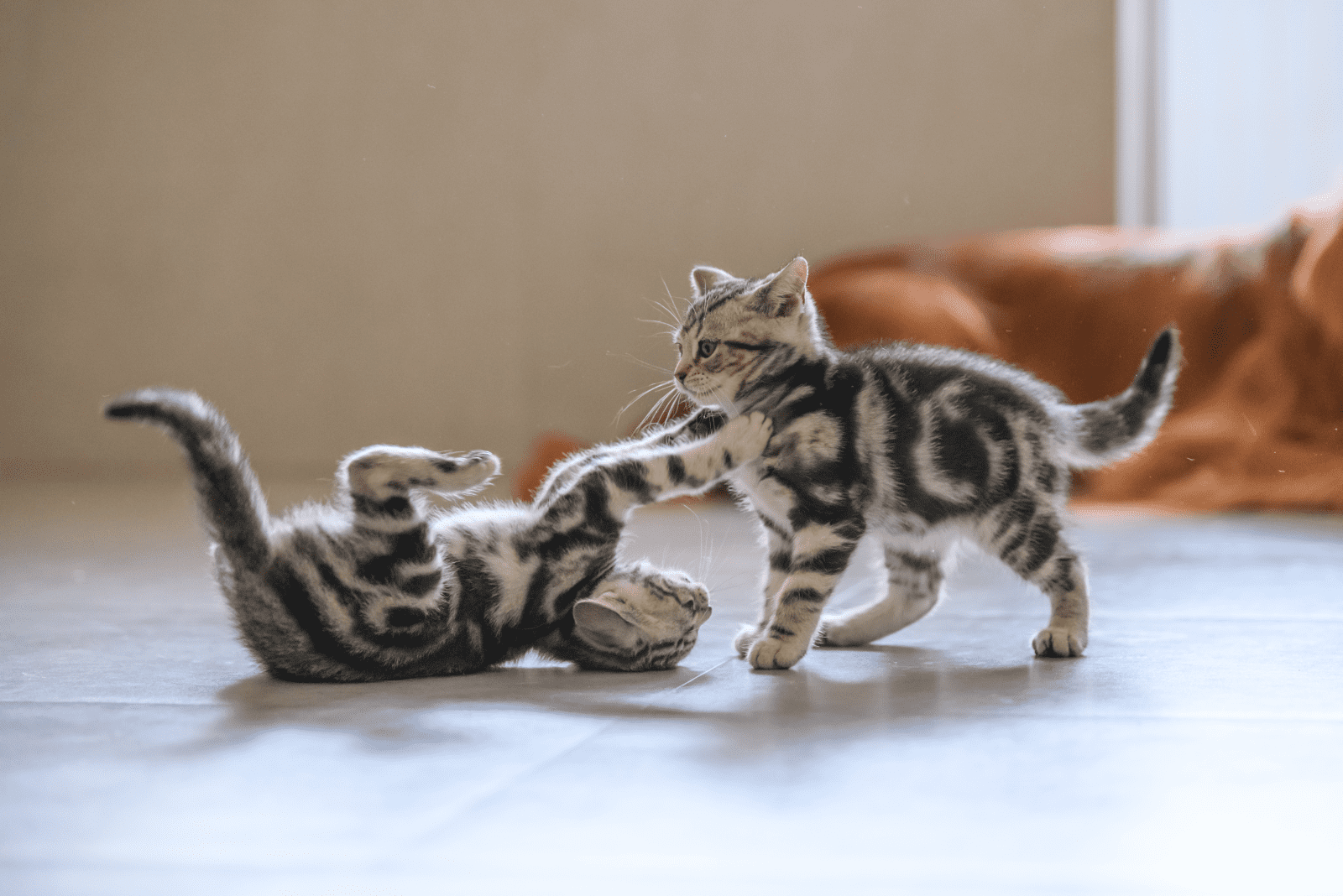
Check out this guide for getting to know your kitten and what size it will likely be at all stages of its life.
Three-month-old kittens still look like kittens, but four-month-old kittens begin to resemble miniature versions of what they will look like as adult cats.
At this stage, their limbs are becoming longer in relation to their bodies, and their other adult features are developing. They still have their beautiful fuzzy baby fur, so enjoy it while you can!
This baby fur will soon be replaced by their adult coat, which is a lot thicker, sleeker, and shinier, at the age of 5 or 6 months. So how much exactly should a 4-month-old kitten weigh?
4-Month-Old Kitten Weight And Height
A 4-month-old kittens size generally depends on the cat breed, gender, and how much they’ve been feeding from the mother cat.
Male kittens and cats are generally bigger than female kittens in most cat breeds. This is evident from the kitten’s birth, although it may be difficult to see at first, because the difference between newborn kittens may only be a few grams.
A female kitten from a smaller breed like the American Curl might only weigh around a kilo at four months old, whereas a Maine Coon kitten could already weigh up to two and a half kilos.
If you purchased your cat from a reputable breeder or registered rescue organization, they should be able to tell you what size your kitten should be at a specific age.
However, rather than depending on the numbers on a scale, monitoring their overall physical condition may be a better sign of how well your kitten is developing. If you are concerned that your four-month-old cat is too large or too little, talk to your veterinarian.
See also: Top 5 Choices Of Homemade Cat Food To Gain Weight
The Behavior & Needs Of A 4-Month-Old Kitten
Kittens start getting their adult teeth when they’re around four months old. Their baby teeth start to be replaced when they are three months old, and the process is ongoing until your kitten reaches six months of age.
The first adult teeth to emerge are the front teeth and then the back molars. You might spot some of the baby teeth in or around your kitten’s bed.
Kitten baby teeth are really small, and your kitten might even swallow them, so don’t be concerned if you don’t see them!
It is likely that the growth of adult teeth will cause some discomfort to your kitten, so at this stage, your pet can get quite bitey.
You should provide your kitten with some chew toys and make sure that he or she doesn’t chew anything they shouldn’t be munching on.
You probably feel like you’re beginning to know your kitten’s personality by now. Hopefully, you’re enjoying finding out all the things that make them distinct and celebrating their uniqueness.
Kittens generally enjoy a diverse range of activities, especially at four months of age. Their favorite games are chasing toys, and they’re definitely growing much better at it as the months pass by. This serves an important purpose; they are learning how to hunt.
It’s so cute to watch a kitten wiggle its bum in the air as they get ready to pounce. If you’re still using your hands, now’s the time to switch to cat toys so you can avoid scratches and bites!
Cats scratch at places where people pass by frequently, such as entrances. Scratching is a kind of communication; it’s your kitten’s way of marking its territory for as many people as possible!
So, one of the most common reasons 4-month-old kittens begin scratching in an undesired spot is because their owners have put the scratching post somewhere private or out of sight.
Your kitten will want to make its presence known
Kittens & Food: What & How Much?
The process of weaning usually starts after six weeks of age when some solid foods should be gradually introduced. The mother cats have done their jobs, and now it’s up to us owners to continue the kitten care.
When snuggling up with your adorable kitten, you will notice changes occurring. You get to witness their eye color change; all kittens have blue eyes at birth and for the first few weeks, but their adult eye color will soon become apparent.
If the mother cat isn’t able to provide milk for her kittens, then the kitten’s life depends on you. You should talk to your vet as soon as possible and find out about milk replacers for bottle feeding.
Long before I even studied to become a veterinarian, I hand-raised a kitten. I found a little kitten abandoned by the trash bins in my neighborhood, and I just couldn’t leave it alone.
My dad and I brought it home and called our local vet. He brought a kitten milk replacer, and we fed the kitten for a couple of weeks using a bottle, like a newborn human baby.
Hopefully, nothing like this will happen, but I just mentioned this so you know that no matter what happens, there’s always a solution!
Whichever diet you choose for your kitten; perhaps you want to give your kitten dry food, wet food (or a combination of the two), raw food diet or home-cooked meals, it is critical that the diet you select at each stage of development is nutritionally balanced.
This is why it’s always best to establish a diet plan with your vet.
Cats require at least one-third of their diet to be protein from animal sources, which is why it’s best to give a meat-based diet at all stages.
Kittens, even at four months old, require more calcium and phosphorus in their diet, which is why you should respect the product rules and only feed your kitten with foods designated for kittens.
Kitten food is designed especially for kittens, and the same goes for adult cat food and adult cats.
You should always follow the feeding guidelines of each product. Unless your vet has told you differently, you should feed your cat/kitten following the recommended amounts on the food packaging.
On days when you’re using treats, (perhaps for litter-training gone well!), you should feed your kitten a smaller portion for their next meal after the treat, so you don’t risk the cat getting overweight.
Daily treats should make up only 10% of your kitten’s entire calorie intake for the day.
See also: How Much Should A 10-Week Old Kitten Eat? An Owner’s Guide
Litter-Training A Kitten
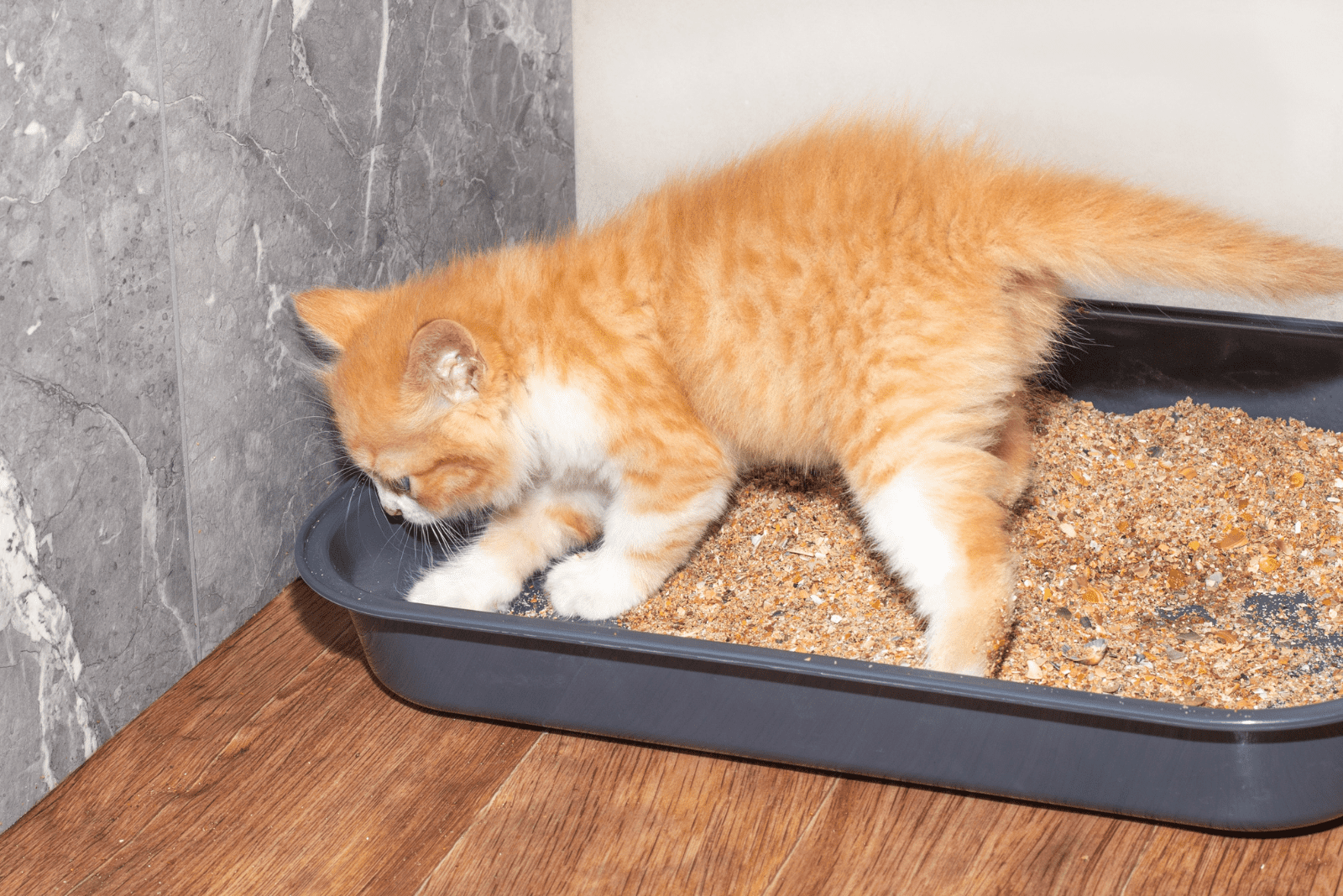
The most common cause of cats being abandoned at animal shelters is the lack of litter-training skills, i.e. kittens pooping and/or peeing around the home.
Struggling by yourself is pointless, so before you feel like giving up on your beloved pet, talk to someone and get advice.
If you have any doubts or trouble with litter-training your kitten, don’t hesitate to talk to your vetor other cat owners you know.
Talk to your vet about your kitten’s health, ensure there aren’t any physical problems (such as UTI), and if talking to your vet isn’t enough, and there are no physical health problems involved, you can consider talking to a cat behaviorist.
The position and location of the litter box, the size of the litter box, or in some cases, the fact that your kitten needs to share its litter box, are all common factors in litter-training problems.
Kitten’s Health Requirements
Kittens are well protected by the antibodies they get from their mother’s milk. These antibodies continue to protect the kittens well into the fourth month of their lives.
A 4-month-old kittens’ antibody protection starts to wear off, so it is critical you finish their course of essential kitten immunizations and vaccinations scheduled for 4-month-old kittens.
Kittens’ last rabies vaccines, booster vaccines for feline calicivirus, viral rhinotracheitis, and panleukopenia are all due at around four months of age.
If you own a 4-month-old kitten and you haven’t provided all the necessary vaccinations by now, talk to your vet and schedule them as soon as possible.
If your veterinarian hasn’t already talked to you about spaying/neutering your kitten, they probably will at this stage of kitten development. Ultimately, you’re the only one who can decide whether or not to proceed, but most vets and cat breeders highly recommend it.
Check out: Top 9 Natural Home Remedy Antibiotics For Cats: User Guide
Kitten Growth Chart & Life Stages
Let’s have a look at the growth chart from a newborn kitten to an adult cat.
| Kitten’s Age | Weight |
|---|---|
| Newborn Kitten | 1 to 5 ounces |
| 1-week-old kitten | 5 to 8 ounces |
| 2-weeks-old | 8 to 12 ounces |
| 3-weeks-old | 12 to 15 ounces |
| 4 to 8 weeks of age | 1 to 2 pounds |
| 3-month-old kitten | approximately 3 pounds |
| 4-month-old kitten | approximately 4 pounds |
| 5-month-old kitten | from 5 to 6 pounds |
| 6-months old to adult | 7 to 9 pounds |
Adult cats might weigh a lot more than 9 pounds, or they can weigh 7 to 8 pounds in total. The weight will depend on the breed of cat, some cats are generally smaller, and some are quite large both as kittens and as adults.
Some Examples Of Different Cats’ Growth Charts
Parents of new kittens will enjoy watching them grow and mature. Most kittens stop growing between eight and fifteen months of age.
However, most of your cat’s growth occurs in the first few months and this is when it’s most noticeable, regardless of what the adult cat size of the cat will be. Your cat’s breed can also affect how long it takes them to reach maturity.
Gender, general health, neutering/spaying, and other factors also affect their growth and development.
It is a great thing that there are many different cat breeds, which come in different colors, patterns, and sizes, but it’s important that you understand the growth of your particular breed.
Sometimes questions about how fast kittens grow and when they finally grow up must be answered with a specific cat breed in mind.
So if you have a Siamese kitten, for example, the answer to this question will be different than if you have a Savannah cat for a pet.
It’s difficult to know exactly how big your cat will grow or how long it will take before it stops growing, but there are some general rules of thumb…
When kittens are born, they weigh only a few grams or ounces and can easily fit in the palm of your hand. Soon, they start to gain 0.25 to 0.5 ounces per day. This means that between days 10 and 15, the kitten’s weight and height will double.
Weight gain in small cat breeds can slow when they reach around 7 months of age as they will weigh less than larger breeds.
When tracking the growth of individual young kittens, it’s also important to note their initial length and height, as well as weight.
The reason for this is that the cat’s breed, gender, and other factors can affect whether the kitten is on the lower or upper end of the growth spectrum. These provide important milestones in the kitten’s development.
As the owner of a new kitten, you should pay close attention to your kitten’s overall growth.
If you are concerned that your pet is growing too slowly, contact your veterinarian immediately.
On the other hand, don’t be surprised if a cat you thought reached its full body size continues to grow!
Growth charts are so helpful in helping you to know the right size for your kitten at every stage of its life. However, they can never be 100% correct, so you shouldn’t follow them blindly, especially with mixed breeds.
Some cat breeds are generally bigger, and some are smaller, just like it is typical for female cats to be a bit smaller than male cats in most cat breeds. Let’s have a look at some examples of growth development in bigger cat breeds.
Bengal cat
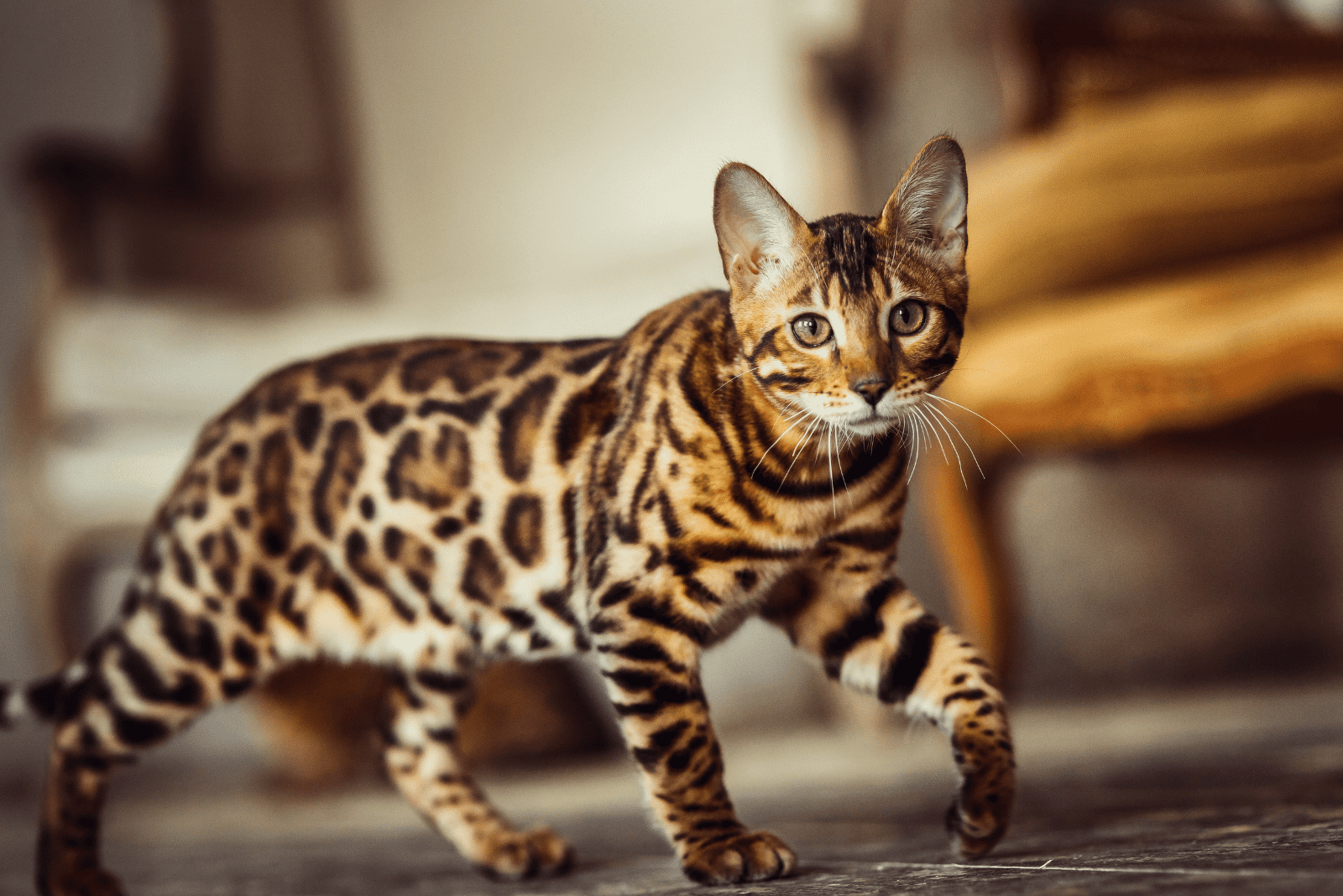
The average size of Bengal cats includes a length of 12 to 16 inches, a height up to 12 inches and a weight of 10 to 22 pounds.
Time taken to reach adult size: 1-2 years.
Bengal cats are often described as little domestic leopards since they have beautiful spotted coats. Bengal cats can be as large as 22 pounds, but more commonly, they weigh around 16 pounds.
As with most cat breeds, adult male Bengal cats are a little heavier than female cats of the same breed.
Bengal cats typically stop growing by the time they’re one and a half or two years old.
You might also be interested in: Bengal VS Savannah Cat – The Rivalry Of The Cat Breeds
Savannah cat
A Savannah cat’s average body length ranges from 19 to 25 inches, even though they might seem bigger. The height of a Savannah cat can be anywhere between 11 and 18 inches, and they usually weigh approximately 11 to 20 pounds.
Time taken to reach adult size: 2-3 years.
The majestic Savannah cat is a mixed breed, half Serval (a wild cat breed) and half domestic cat breed.
How big a savannah cat grows depends on its category. The generation labeled ‘F1’ represents a cross between an African serval and a domestic cat, later generations are hybrids of two Savannahs.
F1 Savannahs are bigger than all other classes. They can grow very slowly, so don’t be surprised if your Savannah cat continues to grow even beyond two years of age.
Maine Coon
The average length of Maine Coon cats is up to 47 inches. Their height range is from 8 to 16 inches, and they weigh up to 25 lbs.
The time it takes a Maine Coon to reach adult size is 4-5 years. They’re just big ol’ cuddly kittens!
This cat breed is the largest one. Maine Coons continue growing long past the age when most other cat breeds have reached their full adult size.
See also: Savannah Maine Coon Mix – Talk About A Majestic Cat!
Ragdoll cat
With an average length of 15 to 25 inches and a height of 9 to 12 inches, the Ragdoll cat’s weight ranges from 8 to 20 lbs.
The time it takes a Ragdoll to reach its full body size can be up to 4 years.
Ragdoll cats are a slow-growing cat breed and they seem to be able to continue growing indefinitely. However, that is not the case and Ragdoll cats typically stop growing when they reach the age of four.
Gender & Growth
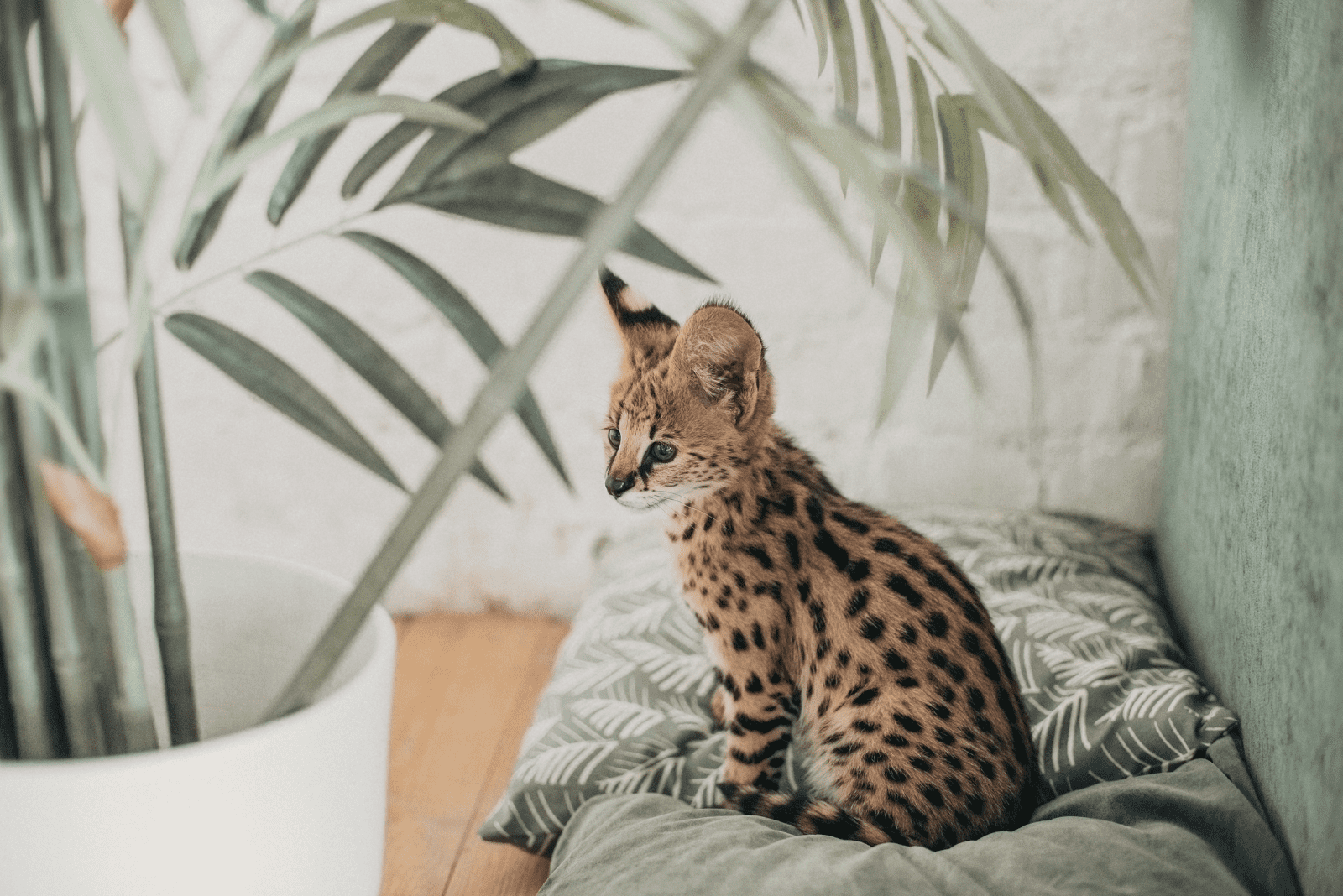
As mentioned earlier, cat size, and weight depend on their breed.
For example, adult female cats are almost always smaller and lighter in weight than male cats in almost every cat breed. In general, male cats are typically bigger, but they take a little longer to reach full adult size than female cats of the same breed.
However, other factors also influence their growth. As a result, small-breed male cats typically reach adult size much faster than large-breed male cats.
Again, other factors also affect how long it takes different cat breeds, both male and female cats, to reach adult size.
Female Savannah cats take much longer to grow than female Siamese cats, for example.
Sexual Maturity
Kittens start recognizing their littermates and begin playing with them after 5 weeks or so. They quickly develop the social skills they will need for interacting with other cats. But when do healthy kittens become sexually mature?
When are kittens ready for their own baby kittens? While kitten socialization starts as early as four or five weeks of age, sexual maturity comes a lot later.
Sexual maturity develops pretty early on. Female cats typically reach sexual maturity when they’re just four months old, and for a lot of cat owners, having their 4-month-old kitten procreating is way too early.
Female cats go into heat a couple of times a year, most typically from February to October, so if you have a female kitten, beware of lurking male ‘suitors’ once your kitten reaches four months of age.
Older female cats have cycles as well, but they last shorter and are less frequent than those of younger females.
As far as male kittens are concerned, they reach their sexual maturity somewhere between six months and one year of age. Their heat season typically lasts from September to March, but tomcats will try and mate with a female cat whenever it’s possible.
See also: How To Get A Cat Out Of Heat Q-Tip & Other Methods
About Overweight Cats
Overfeeding a cat can make it bigger without the cat actually growing. So don’t confuse weight gain with healthy development and growth.
If you know what your kitten’s breed is, then you can use the helpful breed guides and growth charts to track your kitten’s development.
It’s not always easy to tell if a kitten is growing as it should or if it’s getting overweight, especially if you don’t know the breed of your kitten. If your kitten is a mixed breed or from a rescue center, it is hard to predict how quickly it will develop or how large it will grow.
However, if you suspect that your cat is eating too much or gaining too much weight (which may be accompanied by a lack of interest in physical activity), your cat might be getting unhealthy and becoming overweight.
When viewed from above, the cat’s waistline should be slightly visible. You should be able to feel your kitten’s ribs when stroking him/her. If you can’t see a waist or feel ribs, or if your cat has a rounded stomach, talk to your veterinarian about potential weight problems and solutions.
Obese cats sometimes have dirty or oily skin or a greasy coat because they have trouble grooming themselves as efficienctly as other cats can.
Obesity can cause other health issues. Being overweight can make it difficult to tell if your cat is growing as it should.
If you are concerned about your kitten’s health or risk of weight gain, or genetic diseases, consult your veterinarian.
Finally…
So, if you are wondering about your 4-month-old kittens size, bear in mind that it will depend on the cat breed. Generally speaking, it should weigh about 4 to 5 lbs. If you own a purebred kitten, it is best you check out the guide on the specific breed.
As long as your kitten is healthy, everything else is pretty easy! If you have concerns about your pet’s health, be reassured that almost anything can be solved with proper veterinary care.
A kitten’s size will primarily depend on its breed, then secondly on its health and gender. Females are usually smaller, both as kittens and as adults, than male cats.
Hopefully, this brief overview has answered your queries, and set your mind at ease or prompted you to seek your vet’s help if needed. In case you have any doubts, always talk to your veterinarian. Remember, it’s always better to be safe than sorry!



